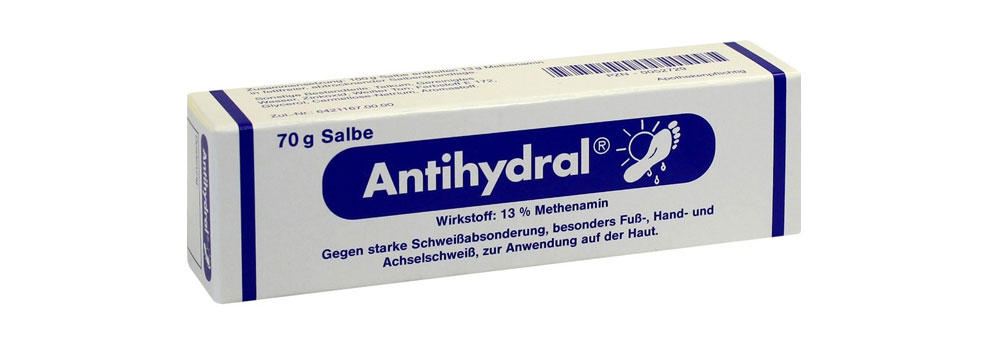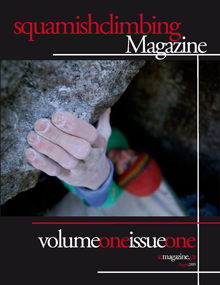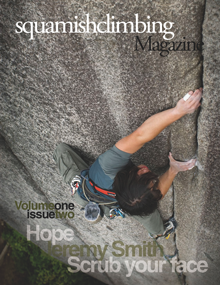My hands sweat a lot. Just thinking about my project, I can make beads of sweat appear on my fingertips. On my first trip to Font, I saw Klem Loskot slip off a warm up I’d just shellacked. He turned to me and said “You have fat wet fingers no?”. He was right. I did have fat wet fingers! Given my affliction, when a magic cream from Germany called Antihydral first surfaced on the climbing scene, rumored to stop skin from sweating, I was all over it. Using a chemical to alter my physiology in order to improve my performance at a sport? Sounds like a tried and true methodology to me. Sign me up!
You see, the stuff works, and for me, it works really well. I’ve had some of my best days ever while using Antihydral. Days when my hands seemed to just magically stick to the rock. I’ve sent almost all my hardest projects while on the cream. And on some of those climbs, I felt like the Antihydral made the difference between failure and success. In fact, if I’ve not meticulously prepped my skin with Andtihydral , I know in my heart I’m not climbing my best. And that’s not always a good thing. I’ve developed a dependence. Now, that wouldn’t be the worst thing if it were all roses, but like all things in life, every high has its low. See, I’ve also had some of my worst days while using the stuff. Days spent trying to climb on skin so thick and dry it’s like glass, dry firing on warm-ups left and right. It’s also to blame for some of the worst split tips I’ve ever had. But is it worth it? For me, yes it is, but I don’t think it is for everyone. I’ll tell you a bit more about it, and maybe you’ll decide if you think its right for you.
What is Antihydral?
Antihydral is a cream that dries your skin and build a strong thick callus. However, on a chemical level, there is much more going on. For a more technical analysis, please see below (thanks to local climber and pharmacist, Brent Nixon).
How to apply antihydral to your skin
I get mine from a German foosball website. Who knew foosballers were so serious about keeping their hands dry! To apply it, I rub on enough to cover each finger tip and leave it overnight. I do this two nights in a row. I just put it on my tips.
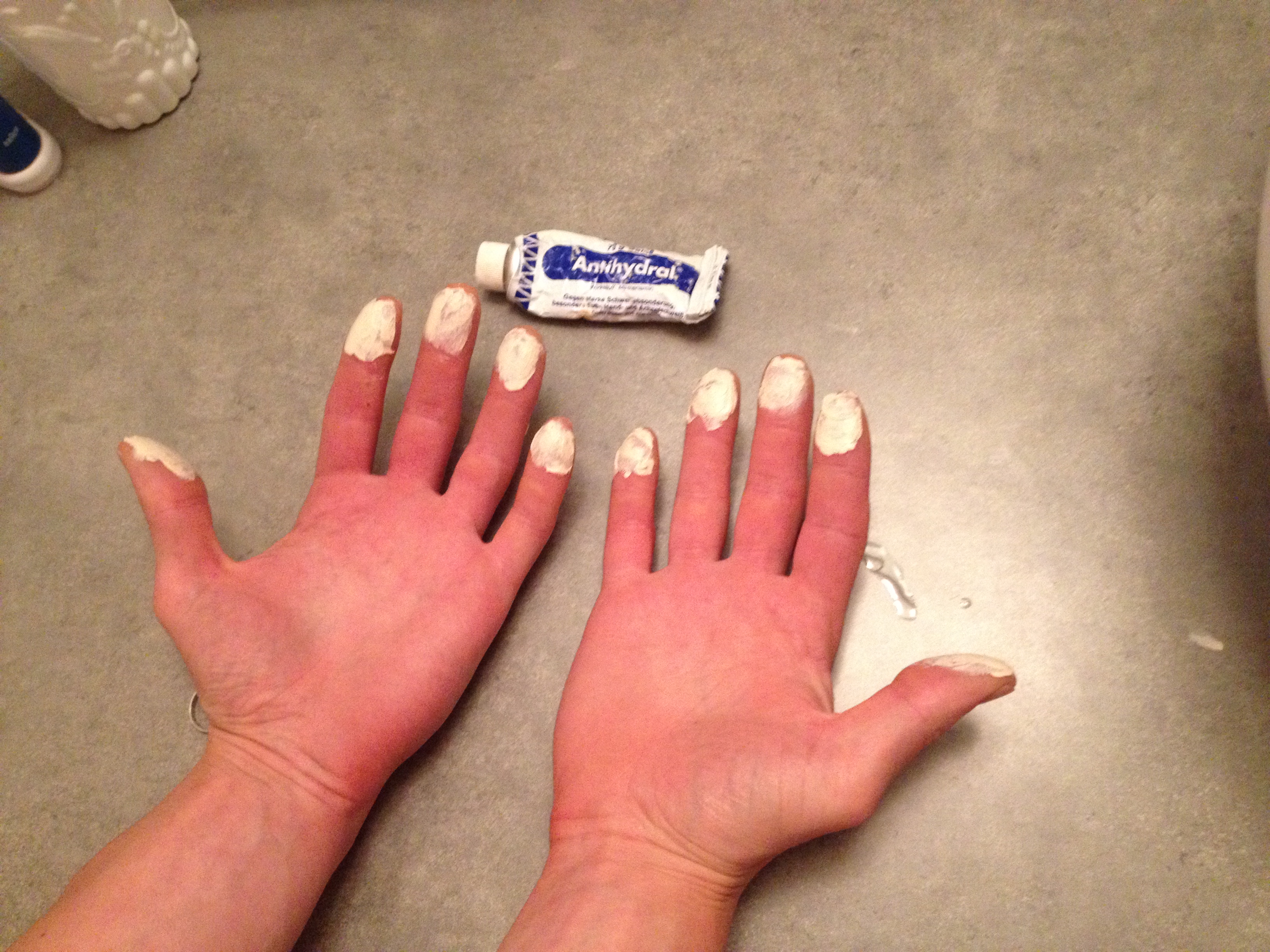
Advice on Regular Use
I have really wet soft skin, and this is what works for me. Everyone’s skin is different, so you may need to apply more or less. Keep in mind, the effects are delayed. They sometimes aren’t noticeable until another day or more later. If I want to climb something Saturday, I will put it on Wednesday and Thursday night. When done this way, Saturday is usually amazing. I’ll have strong dry skin, not too thick. Magic hands. Sunday is usually pretty good too. Monday things start to go downhill. My skin seems to continue to dry out and the callus becomes too thick. I start dry firing off holds. Climbing on plastic is nearly impossible. Thankfully there is a way to mitigate this issue: sandpaper, and lots of it. When my skin gets too thick, I simply sand it down. Before Antihydral, taking a piece of sandpaper to my tips would have been ludicrous. My skin was always too thin, too soft and too moist. With Antihydral, I never go climbing without sandpaper on hand. It is critical.
The really tricky bit is figuring out how and when to reapply. Best is to wait a full two weeks for the effects to completely wear off, and then begin fresh. However, once you’ve tasted the sweet glory of climbing on dry skin, it can be hard to endure the days when the effects of the cream linger but aren’t strong enough to make a huge difference. I’ve tried reapplying smaller amounts, more frequently, with some success. It’s a fine line though, because too much Antihydral and no amount of sanding will save you. The thicker your skin gets the more you’re in danger of the worst case scenario: a massive split tip that might take weeks to heal.
Antihydral is particularly effective on Squamish granite. All rock types have different texture, and some just aren’t as condition affected as others. Anyone who’s bouldered here in the summer knows how heinous even relatively easy sloper problems feel in the heat and humidity. This just isn’t the same on other rock types. Sure, everything feels harder when it’s hot, but in my opinion, its not as marked as it is on granite. For this reason, any reduction in moisture on your skin, makes a huge difference here on your projects at home.
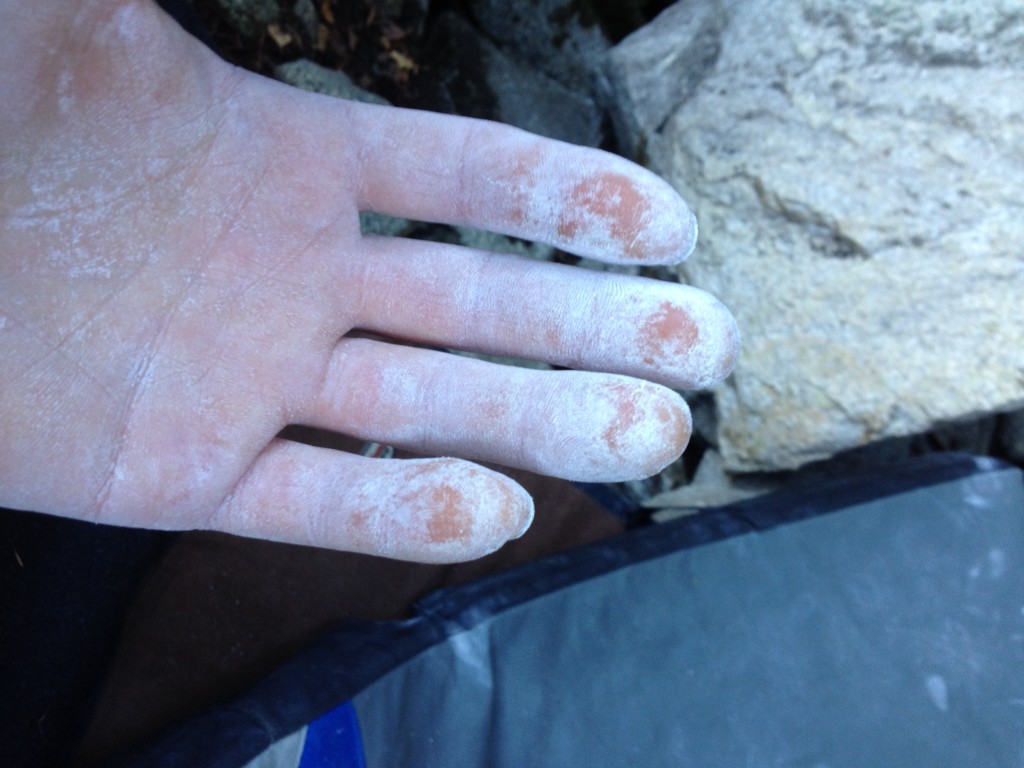
Granite slopers and sweaty tips, they just don’t mix. Photo courtesy of Luke Zimmerman ©
Antihydral can also be really helpful for preparing your skin for a winter road trip. Imagine you’ve been climbing only in the gym for months and have relatively soft “gym tips”. You head south to Bishop and within a day your skin is trashed. Not a good situation! By applying Antihydral a few days before the trip, you can preemptively build callus, which is a lot more like the kind you get climbing outside a lot. On my most recent trip to Smith, I climbed four days on and had zero skin trouble. People that know me and know the problems I usually have with skin, know how amazing that is.
In summary, for climbers who already have problems with dry skin, Antihydral probably isn’t something you even want to consider, but if struggle with sweaty tips, it’s a game changer. But remember, the moment you apply it, you are signing up for full-time skin management. And you might like it so much you can never go back.
Active Ingredient
Now for those of you wanting a bit more detail on how the active ingredient in Antihydral, methenamine, really works, here is some great information provided by local pharmacist and climber Brent Nixon:
Synthesized industrially by combining formaldehyde and ammonia, Hexamethylenetetramine has many industrial uses and applications. As the mandelic acid form, it is used for the prevention and control of recurring, chronic urinary tract infections. It decomposes at an acidic pH in the bladder to form formaldehyde and ammonia, and the formaldehyde is bactericidal; the mandelic acid adds to this effect. Urinary acidity is typically ensured by co-administering vitamin C. The antibiotic effect is only effective against bacterial infections in the urinary tract. It will not work for other types of bacterial infections or for viral infections.
In hyperhydrosis, methenamine has been used since the 70’s for palmoplantar hyperhydrosis. Antihydral 13% Methenamine is marketed in the USA, Germany, Austria, and Dehydral 8% Methenamine is marketed in Canada for this indication. On the skin, with a little moisture and a little acidity, Methenamine releases formaldehyde. The formaldehyde causes proteins at the sweat gland openings to become denatured leading to gel-like plugs that can last several days after use.
The drug was temporarily taken off the market in the early 90’s when better medications came along but has since been reintroduced due to bacterial resistance. Bacteria can not develop resistance to formaldehyde, eliminating any fears of breeding resistant bacteria from repeated exposure. For this reason, those climbers using Dehydral or Antihydral cream do not need to worry about developing resistant bacteria strains on their skin on in their body.
Luke Zimmerman is a local Squamish Climber and father of twins. Special thanks to Brent Nixon for his great information.
For purchasing information on Antihydral, please click here, but don’t say we didn’t warn you.
